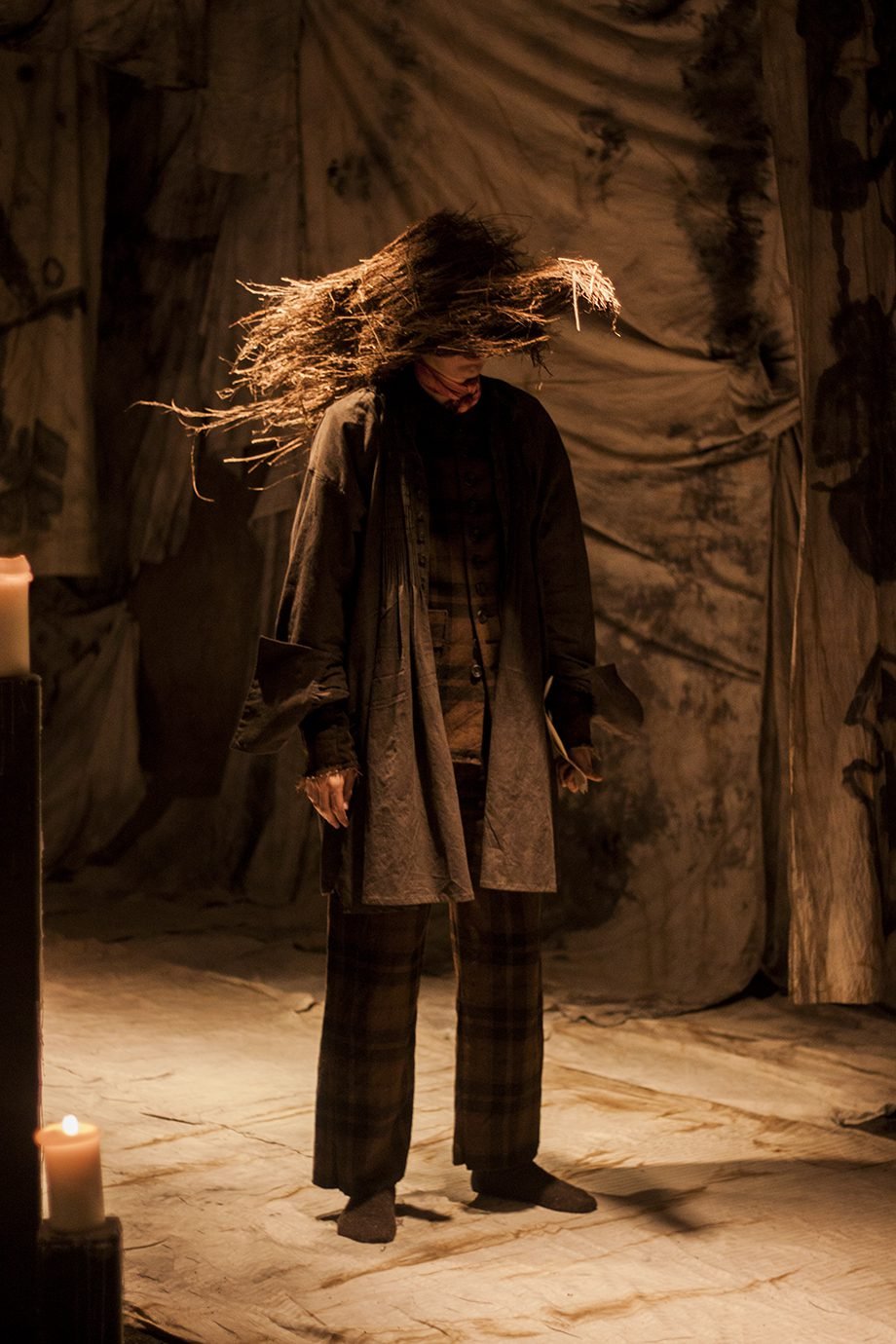Born in 1970, Collins attended the West Surrey College of Art and Design in Farnham; a venerable photography course with strong ties to the documentary tradition (one of Collins’s tutors there was Martin Parr). Upon leaving, Collins rose to prominence during the mid-1990s when the structures of print media were breaking down and new magazines were being forged. Collins’s extensive body of work “tells the story of fashion photography in this country,” [in that period] according to Martin.
“Thank goodness I studied photography. It taught me to look, it taught me to really see and observe people differently, and now, my eyes are trained like that. I have a reportage eye.” – Liz Collins
Fashion photography at the time was widely shunned within educational settings as a lesser photographic practice due to the medium’s associations with the fashion system and its inherent commercialism, Collins explained: “Martin [Parr] was very anti-fashion.” Those on the course who wanted to practice fashion photography were required to take a portable flashgun and start making documentary work. “We were told to interject ourselves in people’s lives for a period and record that. And that wasn’t something some of us wanted to do.” Despite this, Collins expressed her gratitude for having decided to study photography, “Thank goodness I did. It taught me to look, it taught me to really see and observe people differently, and now, my eyes are trained like that. I have a reportage eye”
“Technical skill and special powers of empathy [are the secrets to a successful fashion image]” – Penny Martin
“I was completely obsessed with magazines as a young girl. I have two older sisters and one of them was studying fashion. I’d get her old magazines and for me they stirred up some kind of crazy desire and competitiveness where I could barely look at the pages because I wanted to be doing it so badly,” Liz said. The photographer grew up at a time when British style magazines were exploding in number. Periodicals such as Blitz and i-D enticed her. “I was super turned on by it, I had no choice: I just had to create pictures.” My mother saw the magazine collecting as frivolous but I knew it was my investment.
What’s the secret to a successful fashion image? According to Martin: “Technical skill and special powers of empathy.”Penny would know, Collins shot her for the first issue of The Gentlewoman, and although the image didn’t make the cut, she described the ‘magic’ of being on set with Liz. Collins prides herself on the connection she fosters with her photographic subjects, allowing them to open-up and allow her to get under their skin. However, as she explained, it’s not always so easy. “There are plenty of moments when you ask a sitter ‘to relax’ but it doesn’t happen. Then, I photograph the tension. The tension is just as interesting to me.”
“I always called my girls (models) capable, handsome girls, I wasn’t really interested in pretty girls. I like women who can handle themselves. I grew up in an all-female, single mum household. It’s what I know.” – Liz Collins
Liz and Penny talked the room through a selection of Collins’s past work. Beginning with “Drama Queen”, a story she shot for Dazed & Confused in 1999, styled by Katie Grand and featuring a hysterical Giselle Bündchen. “The story was low-budget, I was thinking about someone receiving some bad news. It was all about a moment, a reaction.” On getting Bündchen for such a low-budget editorial, “Katie was adamant that we use her,” Collins explained, “Somewhat fortunately, Gisele had broken up with her boyfriend the night before, so I asked her just bring that, and so we have it!” Liz was in her late 20s at the time and explained that casting back then was influenced by the women she knew in real life. An idealistic, imaginary best friend. Penny described the Liz Collins’s girl as a “Tomboy sidekick character.”
“We’re currently in a period where 90’s of media is being fetishised.” – Penny Martin
Liz agrees, “I always called my girls (models) capable, handsome girls, I wasn’t really interested in pretty girls. I like women who can handle themselves. I grew up in an all-female, single mum household. It’s what I know.”
Martin said she often finds Liz’s early work frequently referenced on mood-boards, “We’re currently in a period where 90’s of media is being fetishised,” she explained.
“There were probably 30 per cent girls on my photography degree course. Back then- in the late 1980s, photography was still very much considered a male, technical subject.” – Liz Collins
The pair went on to discuss women’s role within the field of photography at the time when Liz was coming up. “There were not very many girls. There was Corinne Day, and Elaine Constantine working, Ellen Von Unwerth had already blown up, but generally female photography was scarce. There were very few girls creating photography, very few girls assisting,” Collins explained. This scarcity of women in photography was reflected in the make-up of Collins’s course at college. “There were probably 30 per cent girls on my photography degree course. Back then in the late 1980s, photography was still considered very much a male, technical subject.” In the past two decades fashion photography has certainly opened-up. In a 2019 speech, citing ‘several sources’, François-Henri Pinault, chief executive of Kering, claimed around 75 per cent of photography students around the world were women. Despite this, only 15 per cent of those are able to turn their skills into a career.
After college, Collins didn’t have a specific plan. “Strangely, I’ve never had a very long game-plan,” she explained. “Growing up in Birmingham I was really into youth subcultures,” (in her teens, Liz was big on Birmingham’s 1950s revival scene).
Collins’s advice to those wanting to push their work out there: “Find your people.”
After moving to London, Liz fell into the explosion of creativity synonymous with the time and found friends in the founders of Dazed & Confused. “They needed photographers to create shoots for the magazine, so I started to do portraits for them. The portraits turned into fashion stories and strong working relationships were forged.”
“I was doing bar work and home decorating. There was a lot of non-photographic hard work happening just to get the real show (the photography) on the road.” – Liz Collins
Even when seemingly successful, photographers often have to take on additional work to keep financially afloat, which remains the case today. Photographers and assistants don’t make much money from editorial and what they do earn mostly goes back into their practice. “I was a painter and decorator, I painted houses.” Collins also took on bar work “There was a lot of non-photographic hard work happening just to get the real show (the photography) on the road.”
Then, the pivotal moment came for Liz when the founder of Smile Management Kim Sion saw Liz’s work. “Kim represented me when I had very little work but she saw my eye. My first commission was for Prada.”
“I had assisted the still-life photographer Matthew Donaldson for a very enjoyable three years. I was scaling up what I’d learnt from still-life into life-sized fashion.” – Liz Collins
While flicking through Collins’s plethora of imagery, Penny spoke of the “formal devices that begin to arise. “Central to Liz’s early work is the avoidance of full-length fashion. We’re seeing pores and freckles, you’re close up to the body, it’s intimate,” Martin commented. “I assisted the still-life photographer Matthew Donaldson for a very enjoyable three years. I was scaling up what I’d learnt in still-life into full-length fashion,” Collins explains. “I guess I was just looking at areas. I could look at someone and see: ‘There’s a portrait here’, ‘I was just into parts at that stage. I’m guessing it was avoidance of intimacy, but it created intimacy too.” She later joked, “I was terrified of full-length, but as my confidence grew, I just went and had a go, and it turns out you just scale it up, the information. Technical confidence takes years to develop, especially as a woman but you must try and try again.”
“It’s a performance. You have a time slot to get this entire shoot right. When you finish the day, you’re exhausted but your adrenaline is high, it’s like you’ve just come off stage.” – Liz Collins
The day of a shoot can induce fear in even the most experienced of photographers, as Liz explained. “It’s a performance. You have a time slot to get this entire shoot right. When you finish the day, you’re exhausted but your adrenaline is high, it’s like you’ve just come off stage.” During Collins’ early days, there was a hierarchical structure to the fashion shoot of which the photographer was on top. As Penny Martin notes: ‘The pressure was absolutely wild at that apex.” That hierarchy, over the past few decades, has certainly eroded with the rise of the stylist and other professionals working in fashion photography. “The hierarchy has shifted,” adds Collins, “The whole walking in at eleven o’clock and leaving at four day has certainly never been enjoyable to me. Maybe it’s partly about being a woman too, to proving oneself; I don’t want to delegate all the jobs to others. I want to know that I was present and that I am hands-on and involved with all aspects.”
Collins’s advice for aspiring fashion photographers: “The world is awash with photography today more than ever, everyone who owns a smartphone can take a gorgeous picture on their phone. What’s important is to find something that is recognisable in your work, something that is unique to you.” She continued, “I know it’s hard, everything has been done, but being something that you love, something that is unique to your eye and makes you stand out in the forum.”









